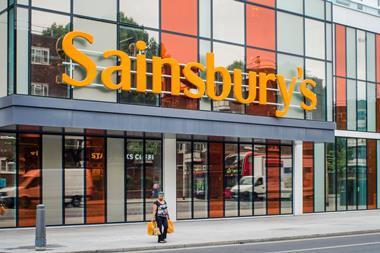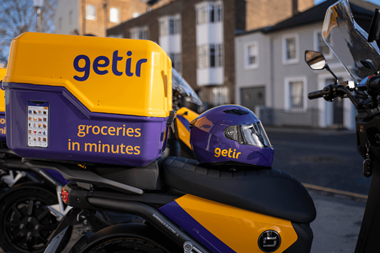PROMOTIONAL RESEARCH
Retailers looking to provide consumers with a more convenient way to buy loose items should consider simplifying pick lists using AI technology such as computer vision, says Diebold Nixdorf’s Matt Redwood
Did you know that more than three in 10 shoppers steer clear of fresh produce when using self-checkout systems?
Many customers feel that purchasing produce that is priced by weight or quantity such as fruit, vegetables or other loose “non-barcoded” items is sometimes complicated and time-consuming, exactly what you don’t want when you’re trying to checkout and pay.
The process of scrolling through the pick lists to find the right category, variety or type of product is sometimes a complex and time-consuming task – every retailer has its own way of categorising their produce and it’s not always easy to find the variety of carrots you picked up.
One of our recent customer surveys found that 10-15 seconds is the average time customers require to select a single loose produce item from a pick list.
Now think about an average shop and the number of produce items customers buy, that adds up to a lot of time.
The more items a customer buys, the more time the transaction takes, the slower the checkout process is, and the more queues then build up.
There’s also a lot of margin for error, an aspect that many customers don’t feel comfortable with. No one wants to be accused of being dishonest. It is a vicious circle.
The good news
For retailers looking for a solution to this conundrum, there are innovations in artificial intelligence that can help.
AI has gradually been aiding retailers behind the scenes, from demand forecasting to chatbots, but recent advances have led to it being used front and centre.
These technologies, namely computer vision, can remove barriers to checkout and enable customers to seamlessly and easily handle non-barcoded fresh fruit and vegetables along with other non-barcoded items.
A camera placed on top of the scanner/scale of the self-service device, in combination with sophisticated algorithms, identifies the type of produce or the quantity and allows the customer to select the right item with the touch of a button, removing the need for the customer to find the item by oneself.
The knock-on effects of such technologies can have impacts on customers and retailers alike:
- Customer experience improves – AI eliminates the issue of searching a long list of produce to find the desired item. This makes the process less complex, and customers will no longer feel worried or experience frustration when checking out with loose items
- Efficiency increases – Item recognition technologies can reduce the average time to select the right one from the pick list to three seconds per item, enabling each transaction that includes a loose item to be 7-12 seconds faster
- Self-checkout transactions accelerate – Up to 33% more customers with loose items can use self-service solutions, given that three out of 10 customers with loose, non-barcoded items currently choose not to finalise their shopping using self-service solutions
- Throughput rises – Several security and help interventions can be eliminated, with overall interventions reduced by up to 45%, according to the Food Industry Association’s 2022 Power of Produce report. Faster transaction times and fewer interventions will lead to a higher number of transactions in stores, and more importantly, less queueing
- Stock accuracy improves – By using AI technology, any unintentional mistakes or any intentional malicious behaviour by customers will be eliminated by automating the item selection process
With consumers intent on getting their shopping done as efficiently and fuss-free as possible, it is down to retailers to minimise friction at tills.
Simplifying the checkout process for the customer using tech can reduce complexity, increase the speed of the transaction, and improve the ease of use.
It also reduces the complexity for staff, reducing interventions and freeing them up to help customers.
Consumer frustration is eliminated, offering a better customer journey and more transactional efficiency – a key driver for success for retailers attempting to differentiate themselves and provide the best possible shopping experience.
Matt Redwood is global director of retail at Diebold Nixdorf

Matt is a strategic and business transformation leader with extensive experience within the retail technology sector. He has a business development focus with proven, year-on-year growth. He is currently responsible for the fastest growing global business within Diebold Nixdorf with double-digit growth year on year since 2017.
If you want to learn more about Computer Vision item recognition then visit the Diebold Nixdorf website for more information.





























